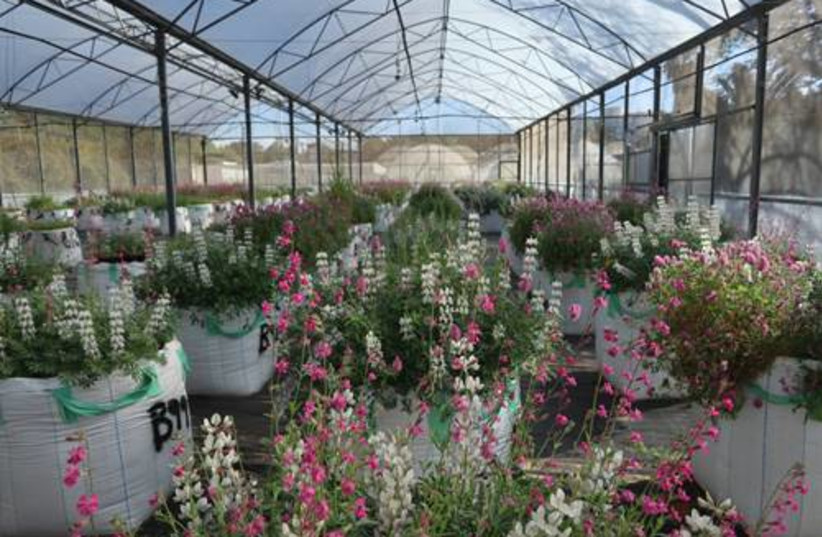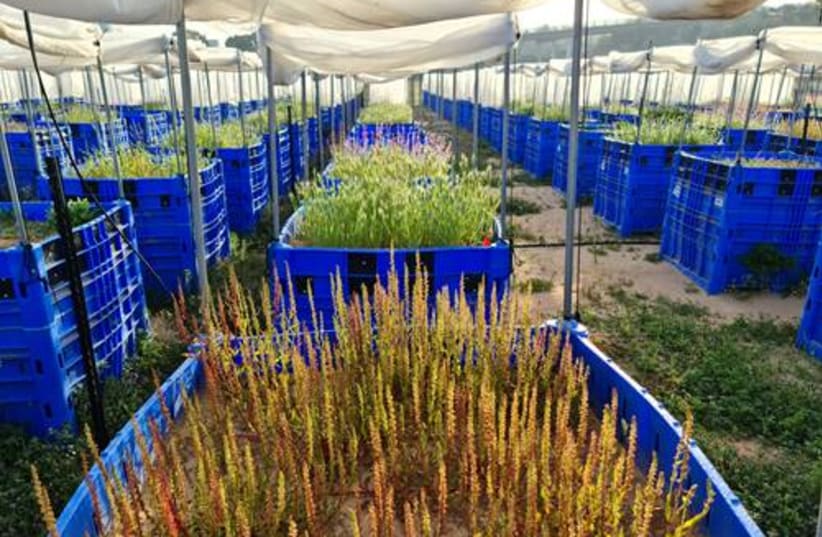For decades, scientists have been interested in the factors influencing the distribution and lifecycles of perennial and annual plants and the competition between the two. They wanted to understand the laws of nature and the adaptation of different species to environmental conditions.
Perennial plants regrow every spring, while annual plants live for only one growing season and then die off. Various mathematical models have been developed to describe the conditions that affect them – but a new study on the subject has been conducted by Dr. Niv DeMalach of the Smith Faculty of Agriculture, Food and Environment at the Hebrew University of Jerusalem (HU); Prof. Itay Mayrose of the Wise Faculty of Life Sciences at Tel Aviv University (TAU); and Dr. Tyler Poppenwimer, formerly a HU and TAU post-doctoral student and now a researcher at the US Food and Drug Association (FDA).
The international database they have created marks the first attempt to examine the relationship between those models and the real-world situation. A new study published in the prestigious journal Nature and entitled “Revising the global biogeography of annual and perennial plants” examines for the first time the lifecycles of plants on a global scale, via the creation of a unique database containing huge quantities of data.
They used empirical tools and big data to examine theoretical paradigms about the way in which human disturbance is affecting annual plants and their global distribution. Among other things, it was found that annuals are expected to benefit more with the rise in human population density and climate change that could prove devastating for the ecosystem.
All flowering plants follow the same basic steps in their life cycle. Annuals complete that cycle in one growing season, whereas perennials live on for three years or longer. But, if you begin studying the labels on your new plant- or seed-packet purchases, you’ll discover many twists on this basic definition. You’ll come across terms such as “hardy” and “half-hardy" annual, or tender perennial. There’s also a third plant category – biennials – that combines some of the characteristics of both plant types.


Annuals vs perennials: yes/and, not either/or
What is clear when comparing annuals and perennials is that neither is better than the other. Combining both types in your garden designs along with shrubs and trees gives you the best of both worlds and unlimited options in color, texture, form, and bloom time.
Growing annuals can be a good way to take gardening one year at a time; experiment with new plants and color schemes without making a long-term commitment. Annuals are perfect for temporarily filling in bare spots in established gardens or refreshing containers through the season. Annuals give you nearly instant gratification, maturing faster than perennials or biennials. They put all of their energy into developing colorful flowers.
Unlike their short-lived counterparts, perennials are typically cold-hardy plants that will return again in the spring. They usually bloom for only one season each year, but some bloom again. But they don’t always live forever, and some demand more maintenance than others. Most perennials need less watering, which is an advantage in dry and hot climates.
The large majority of species in nature are perennials, as this category includes grasses as well as trees and bushes, and they are very important for the ecosystem as a whole due to their central role in moderating climate changes throughout that system and preventing soil erosion and flooding.
The HU study, based on a new database created by the researchers combines datasets on distribution and datasets on lifecycles, making it possible to establish the prevalence of different lifecycles around the globe. It uses empirical tools and big data to examine theoretical models about the way in which human disturbance is affecting annual plants and their global distribution.
Study helps explain ancient history, predict the future
The study helps explain human history and is relevant for the future of humankind and why agriculture – which is the basis for human civilization – first appeared in the Middle East. “Our region is unusual in its high proportion of annuals, and now we know why; it has the right climate conditions,” they wrote. “Food production is based mainly on annual species. This is true today, and it was true thousands of years ago. These conditions facilitated the transition from a hunter-gatherer society to an agricultural society. Regarding the future, our model suggests that the human species has become the most influential factor on the planet, and not only will its impact have consequences for wild plant life, but the changes caused will also affect human life in turn.”
DeMalach explained that “one of the great challenges facing humanity in the 21st century is providing food for billions of people with minimal damage to the environment. Therefore, extensive efforts are being made to shift from annual crops to perennial crops, which are more environmentally friendly. The problem today is that perennial crops are still less productive, and there is great debate as to whether they can be made more productive in the future.”
Among other things, the authors found that annuals are expected to benefit more with the rise in human population density and due to climate change, which could prove devastating for the ecosystem.
Before the current study, the use of empirical data to assess the spread of vegetation was restricted to localized studies of regional systems. For the first time, the new database assembled data about the lifecycles of some 235,000 species – 67% of the species known to science – in one place. These were collected over the last 80 years from various sources throughout the world, including millions of observations of species across the globe.
Among agricultural crops, the numbers are reversed, with annuals taking up around 70% of agricultural lands and constituting some 80% of the foods consumed by humans. This is because annuals are more efficient at producing seeds, which are a source of carbohydrates and proteins and form the backbone of the human diet.
The researchers found that annuals are common in regions in which summers are marked by particularly high temperatures and low rainfall. This contrasts with the previously accepted view, which did not consider the seasons of the year to be a relevant parameter and instead focused solely on annual averages of temperature and precipitation.
For example, the proportion of annuals is higher in California compared with the Chihuahuan desert covering parts of northern Mexico and the US despite the latter being more arid on average. This is because the summers in California are much drier (almost no summer rain). Additionally, the study found a much lower distribution of annuals throughout the world than was previously thought to be the case.
While the accepted estimate in the scientific community was that they form around 12% of all vegetation, the new study findings show a figure less than half that, at no more than six percent.
The database makes it possible to predict the future impact of climate change on the plant world. They developed a model predicting that within three decades, the proportion of annuals will increase in some 70% of regions around the globe; this likely to harm the environment, as annuals are less efficient than perennials at reducing carbon dioxide in the atmosphere.
